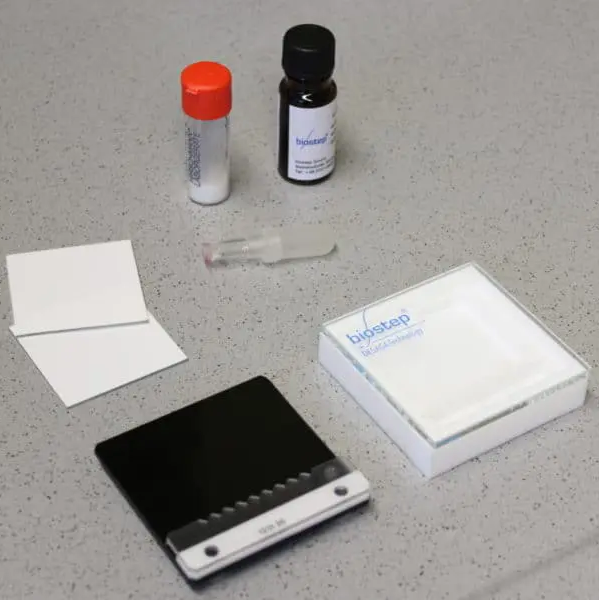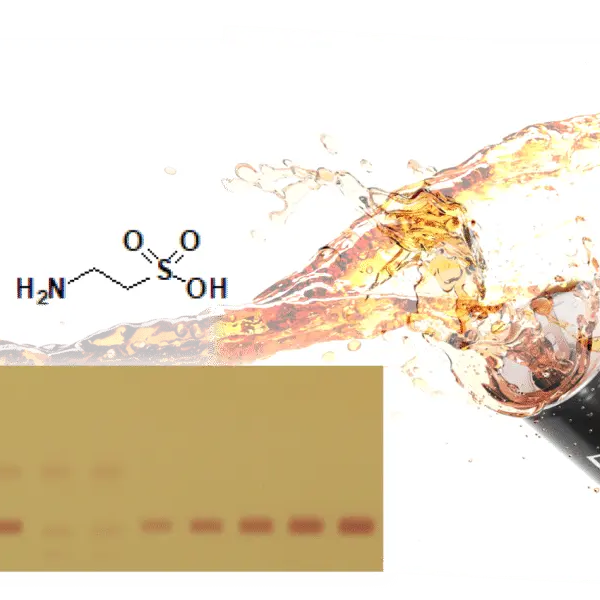Use of the bionis tlc rapid test kit

In thin layer chromatography (TLC) and HPTLC (high performance TLC), a distinction is made between the mobile phase, made up of various solvents, and the stationary phase, a layer of silica gel on glass or aluminium plates. The separation principle is based on the different affinities of the components of the mixture for the mobile phase and the stationary phase. The mobile phase migrates through the stationary phase by capillary forces and transports the sample components. The different substances are separated from each other by adsorption and desorption processes in the stationary phase.
Detection and dosage of taurine in energy drinks

Download PDF file
Energy drinks with a high taurine content (up to 4,000 mg/l are generally granted through special permits) are increasingly being placed on the market. Intensive use of energy drinks containing taurine increases the risk of undesirable side effects. To monitor the maximum values currently valid for taurine in energy drinks, a simple and rapid analytical method is needed so that it can be used routinely in food monitoring [1,2]. High-performance thin-layer chromatography (HPTLC) is a rapid and inexpensive analytical technique for analysing different samples under the same conditions. Here, the assessment of taurine in energy drinks from various suppliers was carried out using the ProViDoc DD70 system – after post-chromatographic derivatisation with ninhydrin using the ChromaJet DS20.
Identification and characterisation of Maddar and Indigo natural pigments

For this application, a trial was carried out to compare the two main classes of natural colouring agents, anthraquinoids and indigoids, with their synthetic analogues. Maddar (Rubia cordifolia and Rubia tinctoria) and Indigo (Indigofera tinctoria) dyes were used in the study. The equipment was chosen to provide a high level of chemical information, making identification of the dyes very specific. Images of the plate eluted by a dye were recorded using the ProViDoc DD70 image recording system, and the development of the chromatogram of the dye using the CD 60 densitometer with a beam of visible light and UV ranges of 254 and 366 nm resulted in highly distinctive characteristics. Fluorescence was then measured and recorded.
Detection and determination of caffeine in caffeine-containing shampoos

Products containing caffeine have been consumed for hundreds of years for their pleasant taste and their stimulating effects on the central nervous system. Hair care products containing caffeine are used specifically to stimulate hair growth and reduce hair loss. High Performance Thin Layer Chromatography (HPTLC) is a useful analytical technique requiring little sample preparation. Different samples can be analysed very quickly and simultaneously under similar conditions. In the example, caffeine qualification in caffeinated shampoos from different suppliers was detected under the influence of UV light (254 nm). Quantification was carried out using a CD60 densitometer.

